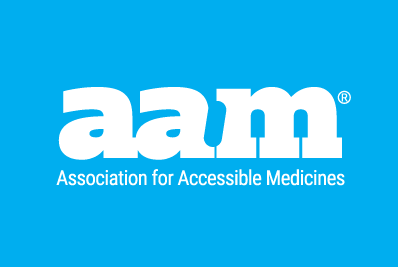In 2024, generic and biosimilar prescription medicines saved $467 billion for the U.S. healthcare system overall, with more than $3.4 trillion saved over the past 10 years. The availability of safe, effective and affordable generics means savings for a state’s residents and taxpayers. AAM believes that any policy, federal or state, intended to tackle the high cost of prescription drugs must increase competition—rather than simply shift costs among health care stakeholders.
Unfortunately, many of the solutions proposed at the state level have focused only on “price transparency” or pricing limitations with no recognition of the differences between the brand industry that drives higher prices and the generic industry that drives savings. In addition, some policymakers emphasize isolated price spikes in terms of percentage increase, while neglecting to mention the overall deflationary pricing trend—price decreases—for the vast majority of generic medicines.
Our state policy team educates legislators in every state on the value that generic prescription drugs represent—and how to protect those savings. AAM’s Prescription for State Savings outlines several solutions states could pursue.
Generic and biosimilar prescription drugs drive savings for patients and taxpayers. In 2024 alone, generic prescription medicines saved the U.S. healthcare system $467 billion — and over $3.4 trillion in the past 10 years. Generics account for only 1.2% of total U.S. health care spending.
Read more in AAM 2025 U.S. Generic and Biosimilar Medicines Savings Report
Brand-name drug prices continue to rise faster than inflation. In 2024, generics made up 90 percent of prescriptions, but only 12 percent of spending.
Generic manufacturers deliver large volumes of low-margin products and regularly adjust prices up and down to react to market conditions. Generics are extremely susceptible to minor market changes, including new regulatory reporting requirements. The hypercompetitive and rapidly changing nature of generic drug markets leaves generic drugs particularly vulnerable to drug shortages. The highly competitive generic market has more than 200 manufacturers and only three primary purchasers who leverage their power to keep prices very low.
The nature of competitive generic markets can prevent generic manufacturers from raising prices to reflect changing demand or increases in manufacturing costs for products. This results in a dynamic landscape in which manufacturers regularly enter and exit markets as conditions change.
Unlike brand manufacturers, which sell to pharmacy benefit managers (PBMs) and negotiate formulary placement based on rebates, generic manufacturers sell to wholesalers. Three large wholesale/pharmacy buying consortia control more than 90% of the market for generic drug purchasing. They then sell those drugs to pharmacies – with pricing and distribution outside the control of manufacturers. Wholesalers also generate revenue from sales to pharmacies and fees related to other services provided to customers. Like any other supply chain market, wholesalers can capitalize on price fluctuations – especially those in the generic market. The price a patient pays for a generic drug is affected not only by pricing markups by the wholesaler and pharmacy, but also by insurance copay and formulary design choices made by insurance plans and PBMs.
AAM members provide more than 36,000 jobs at nearly 150 facilities and manufacture more than 61 billion doses of prescription medicines in the United States every year.
In 2024, generic and biosimilar prescription medicines saved $467 billion for the U.S. healthcare system overall, with more than $3.4 trillion saved in the past 10 years.
